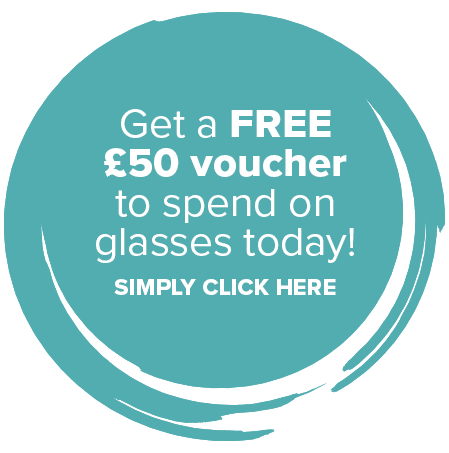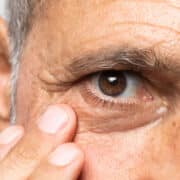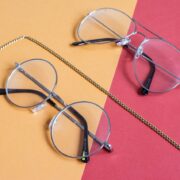Understanding Your Glasses Prescription: Decoding the Numbers and Terms
Receiving your glasses prescription can often feel like deciphering a secret code, with various numbers, symbols, and abbreviations that may seem puzzling at first glance. Knowing how to interpret this important information is crucial in ensuring that your eyewear is perfectly tailored to your unique visual needs, providing optimal clarity and comfort.
In this practical guide, we aim to demystify glasses prescriptions and provide a clear explanation of the various numbers and terms you may encounter. By understanding your prescription, you can make more informed decisions when selecting eyewear, effectively communicate with your optometrist, and confidently navigate the world of vision correction glasses.
Let Perspective Optometrists guide you through the process, offering expert advice and support to ensure a seamless eyewear experience tailored to your unique requirements.
The Basics of Your Glasses Prescription
Understanding your glasses prescription begins with getting acquainted with the key terms and sections contained within. Let’s explore the basic elements of a prescription to provide a foundation for interpreting the details.
- OD (oculus dexter) and OS (oculus sinister): OD and OS are abbreviations for your right and left eyes, respectively. Your prescription will specify measurements separately for each eye, as it’s common for individuals to have different requirements for each side.
- SPH (sphere): The sphere value denotes the amount of lens power needed to correct your vision due to nearsightedness (myopia) or farsightedness (hyperopia). The value is measured in diopters (D) and may include ‘+’ or ‘-‘ signs before the number. While a ‘+’ indicates farsightedness correction, a ‘-‘ represents nearsightedness correction.
- ADD (addition): A number indicated in the ‘ADD’ section of your prescription refers to the additional correction needed for presbyopia, a common age-related vision issue that affects reading and close-up tasks. The ADD value is typically added to the SPH value for bifocals or multifocal lenses.
- PD (pupillary distance): Measured in millimetres, the PD value represents the distance between the centres of your pupils. This measurement ensures that your lenses are accurately aligned with your pupils, providing optimal visual clarity and comfort.
Astigmatism Corrections in Your Prescription
Astigmatism, an irregular curvature of the cornea or lens, can cause blurred or distorted vision at all distances. If your prescription includes corrections for astigmatism, you’ll notice two additional values:
- CYL (cylinder): This value, also measured in diopters, indicates the power needed to correct astigmatism. Like the SPH value, the CYL value can also have a ‘+’ or ‘-‘ sign preceding the number.
- AXIS: Measured in degrees, the axis value denotes the angle at which the cylindrical correction should be positioned to provide optimal vision clarity for astigmatism sufferers.
Understanding Prism Corrections
Though less common, some glasses prescriptions may include prism correction values. A prism correction is used to treat binocular vision issues, such as strabismus (crossed or misaligned eyes) or convergence insufficiency (inability to coordinate both eyes when focusing on nearby objects). The key elements of a prism correction include:
- Prism: This value is indicated in prism diopters (PD), specifying the strength required to correct the misalignment of the eyes.
- Base: Accompanied by the prism value, the base represents the direction in which the prism should be placed within the lens. The base may be denoted by abbreviations such as BU (base up), BD (base down), BI (base in), or BO (base out).
How Prescription Values May Vary for Distance and Reading Glasses
Your prescription may indicate different lens powers depending on the type of corrective eyewear you require, such as single-vision, bifocals, or multifocal lenses.
For distance glasses (used for correcting nearsightedness or farsightedness), the SPH value is the primary lens power used.
In the case of reading glasses (for correcting presbyopia), the ADD value is added to the SPH value for both eyes. This new sum determines the lens power required for close-up tasks.
For bifocals or progressive/multifocal lenses, both distance and near-vision corrections are included in one lens.
Recognising Your Visual Needs by Analysing Your Prescription
Understanding your glasses prescription not only allows you to accurately describe your visual needs but also helps you make better decisions when selecting eyewear. Here’s how your prescription can be used to determine your visual requirements:
- Nearsightedness (myopia): If your SPH values display a ‘-‘ sign, you are nearsighted and require correction for clear long-distance vision.
- Farsightedness (hyperopia): If your SPH values display a ‘+’ sign, you are farsighted, needing corrective lenses for clearer near-vision tasks, such as reading.
- Astigmatism: The presence of CYL and AXIS values in your prescription indicates that you require correction for astigmatism.
- Presbyopia: If your prescription includes an ADD value, this suggests that you need correction for age-related issues with near-vision tasks (such as reading) and may benefit from multifocal lenses.
By knowing how to read your glasses prescription, you can better communicate your visual needs with your optometrist and make more informed decisions about your eyewear choices. Remember, however, to always consult with a qualified optometrist to ensure an accurate eye examination and proper interpretation of your glasses prescription.
Empower Yourself with Optimal Vision and Expert Care
By understanding your glasses prescription, you gain valuable insights into your unique visual needs, allowing for more informed decisions when it comes to selecting the perfect eyewear. However, the expertise and guidance of dedicated professionals is essential for ensuring accurate prescriptions and addressing specific concerns.
At Perspective Optometrists, our experienced team is committed to providing exceptional eye care services tailored to your individual needs. From comprehensive eye examinations to guidance on selecting stylish, bespoke eyewear, you can trust us to help you achieve optimal vision and satisfaction.
Are you looking for an optometrist in London who cares about your eye health and style? Look no further than Perspective Optometrists! Our experienced team is dedicated to providing personalized care to each of our patients, helping you find the perfect prescription and designer glasses to fit your unique needs and tastes. Don’t wait any longer to take control of your eye health and style – book an appointment with Perspective Optometrists today and experience the difference personalized care can make!














